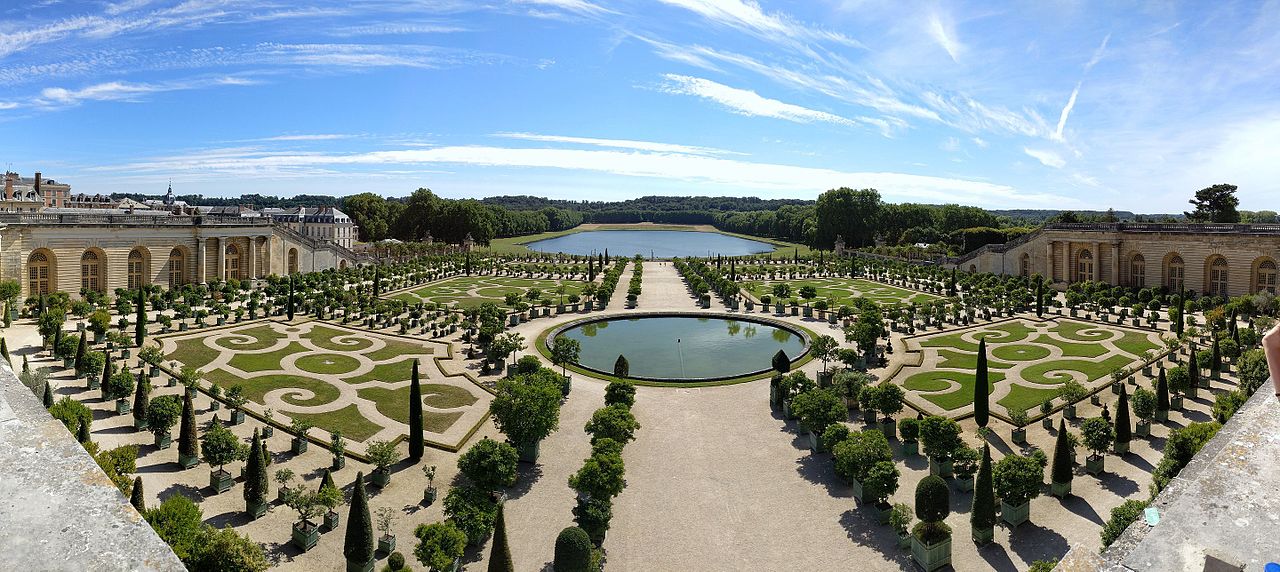
Image - Wikimedia / Nishank.kuppa
The Versailles Gardens They are the most popular French gardens, not only in France, but also in the rest of the world. They occupy a huge area, and embellish the Palace that bears their name. A Palace that was inhabited by several kings, and which has seen numerous plants planted since its creation, more than 300 years ago.
Its history is that of the control of nature by human beings, but it is also the key symbol of how you can have a land full of life.
A Little History

XNUMXth century engraving.
The origin of the Gardens of Versailles can be found in the time of King Louis XIII. In 1632 he bought the lands that at that time belonged to Jean-François de Gondi, and shortly after he had the first gardens for the west wing designed two very famous gardeners of the time: Claude Mollet and Hillaire Masson. They must have liked him a lot, since the basic scheme lasted until 1660, when he had them expanded.
However, there are details that are still very present. For example, the east-west and north-south axes that cross it, or the order imposed on plants, as well as the use of these as hedges.
With the arrival of Louis XIV to power, he had several meetings with Louis Le Vau, who was the architect of his finance minister (Nicolas Fouquet), the painter Charles Le Brun, and a landscape architect named André Le Notre. Fruit of those innumerable talks, the Gardens of Versailles were expanded and beautified throughout his reign.
Stages of reconstruction, from 1662 to 1709
Louis XIV dedicated a good part of his reign to the construction of the gardens that surround the Palace. In fact, it is to him that we owe the appearance they have today.
But, like any garden worth its salt, it went through different stages of reconstruction:
- Year 1662: This year was dedicated to expanding the beds that already were, and creating new ones. The Orangerie, which is an area where orange trees could be protected from winter, are elements to highlight; and the Grotto of Tetis, which is located north of the Palace and which relates Louis XIV to the solar imaginary.
- Years 1664 to 1668: in these years a stage of construction of fountains and beautification of the gardens with forests began, as well as statues related to the Sun and Apollo. Construction of the Grand Canal also began in 1668 and was completed in 1671.
- Years 1674 to 1687: In those years the gardens went from having a natural style to having a more architectural one. Ponds with geometric shapes were built, the Orangery was demolished and a larger structure was created, and three forests were remodeled or created.
- Years 1704 to 1709: after the Nine Years' War and the War of the Spanish Succession, some forests were modified a bit and were even given other names that were related to the last years of Louis XIV.
Age of Uncertainty (1715 to 1774)
From 1715 to 1722 King Louis XV was totally absent from the Gardens of Versailles, and when he returned he did not want to pay much attention to it either, influenced by his great-grandfather, who advised him not to embark on major construction campaigns.
The only relevant thing he did was finish the pond of Neptune between 1738 and 1741, as well as build Le Petit Trianon, located in the »Queen's Village». A few years later, in 1774, he passed away.
Attempted transformation (1774 to 1791)
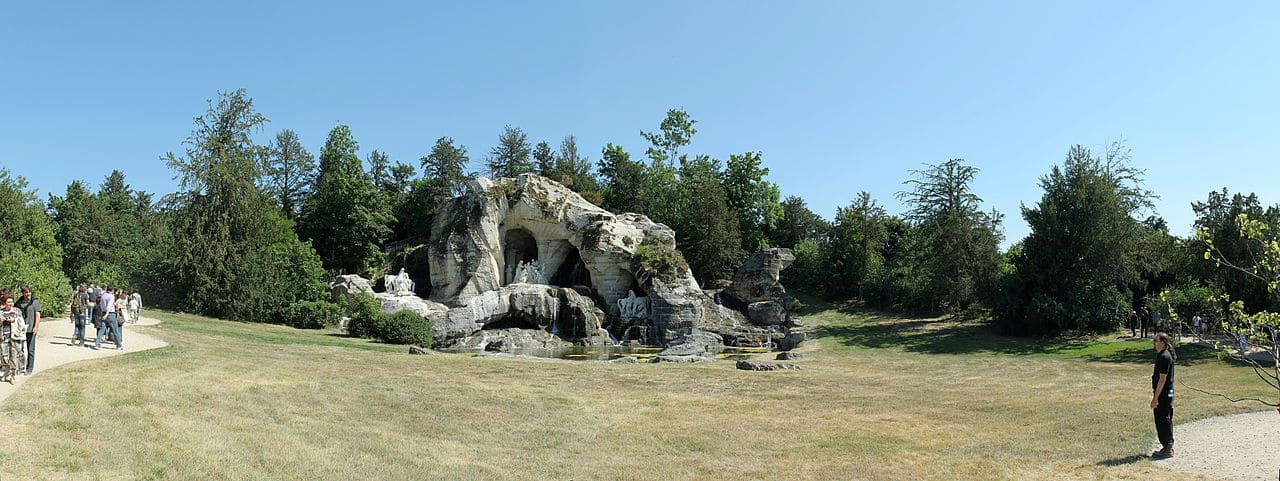
Image - Wikimedia / Coyau // Grotte des Bains d'Apollon
With the rise of Louis XVI to the throne of France, the Gardens of Versailles underwent an attempt at transformation. This man wanted to convert a purely French style garden to an English one; In other words, he did everything possible to make it look natural, without altering the landscape of the place too much.
This is why many of the plants that were planted during the reign of Louis XIV were cut down. What's more, Living hedges, which required constant pruning, were replaced by trees such as linden or lined chestnut trees.
However, he soon realized that the topography of the area did not allow him to have a traditional English garden; so he returned to give it the French style, but yes, he only removed what his experts advised him to remove. For example, the work Grotte des Bains d'Apollon, was built in an English-style forest that is still preserved.
Revolution and later Napoleonic era
The year 1792 was a very bad year for the Gardens of Versailles. Some trees were felled from the forests, and parts of the Grand Parc were destroyed. Fortunately, the situation did not become more complicated thanks to the director of the botanical garden Louis Claude Marie Richard, who was speaking with the government saying that vegetables could be planted in the flowerbeds, and that in the areas that had been left open fruit trees could be planted.
Thus we come to the era of Napoleon, who lived together with the Empress Maria Luisa in the Palace. In the Gardens, numerous trees continued to be cut down, and as a consequence, the soil eroded and new ones had to be planted.
Restoration (1814 to 1817)
In 1814 the first restorations of the gardens began since the revolution. The plants that were bad were replaced, the problems that the fountains and ponds could have were corrected,… in short, the Gardens of Versailles gradually regained their glory at this time.
New era (1886 - present)
In 1886 came Pierre deNolhac as director of the Museum of the Gardens of Versailles. This man was a great scholar, and He dedicated a good part of his life to getting to know, and to make known through the books he wrote, the history of the Palace and its gardens. But in addition, he wrote how they should be restored and preserved.
Those criteria are currently being followed.
What are the characteristics of the Gardens of Versailles?
The Gardens of Versailles They have an area of 800 hectares, embellished by about 200.000 trees, plus another 210.000 flowers that are planted each year.. These plants consume an average of 3600 cubic meters of water. If you want to visit them, you have to go to the Place d'Armes, in Versailles, France.
What to see?
Seeing and enjoying the Gardens of Versailles is an unforgettable experience. You can see plants, that is clear, many of them. But also other things that will make you love the place. For instance:
Queen's Village
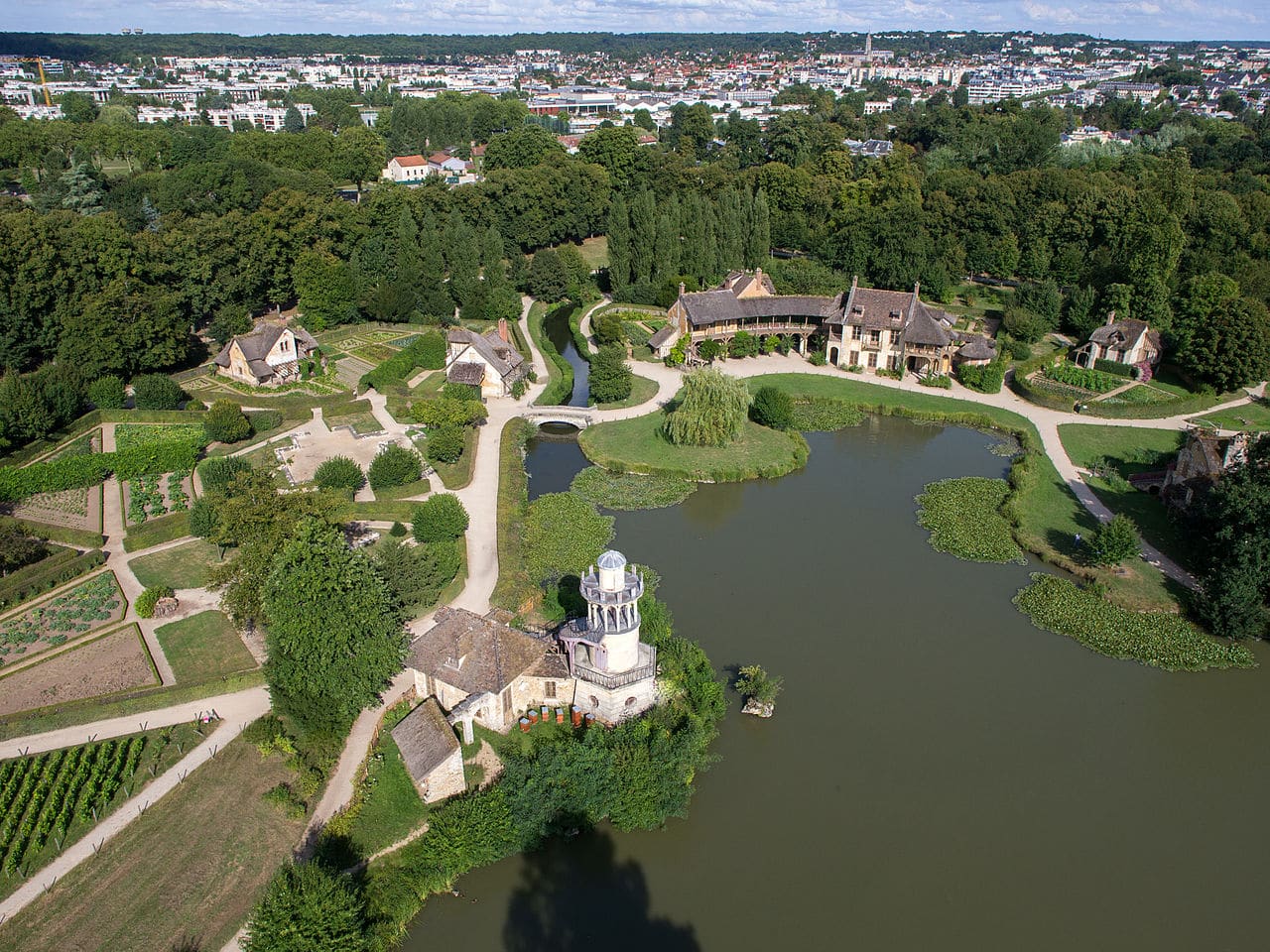
Image - Wikimedia / ToucanWings
The Queen's village is located in the Little Trianon, in the Palace of Versailles. It was built by Marie Antoinette in 1782, who was looking for an area where she could get away from the court and its rules. She longed to be able to lead a life closer to nature, and to be able to forget that she was a queen. Thus, Twelve huts were built, each of which had its own orchard, orchard, or flower garden.
Grand Canal of Versailles
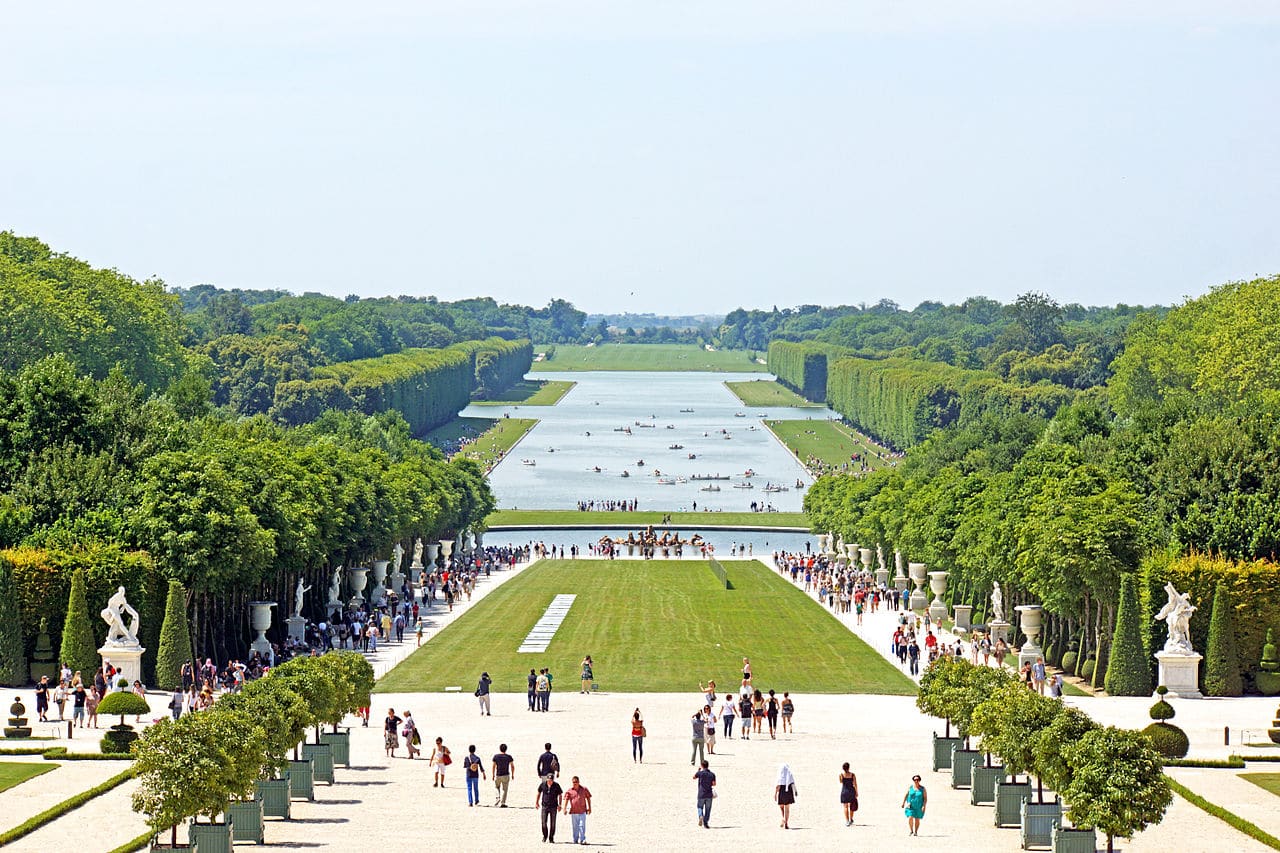
Image - Wikimedia / Dennis Jarvis
With an area of 24 hectares and two meters deep, it is the largest pond in all of Versailles. It was built by André Le Notre between 1666 and 1679, and since 1979 it has been declared a World Heritage Site by UNESCO, along with the rest of the Gardens as well as the Palace.
Great Trianon
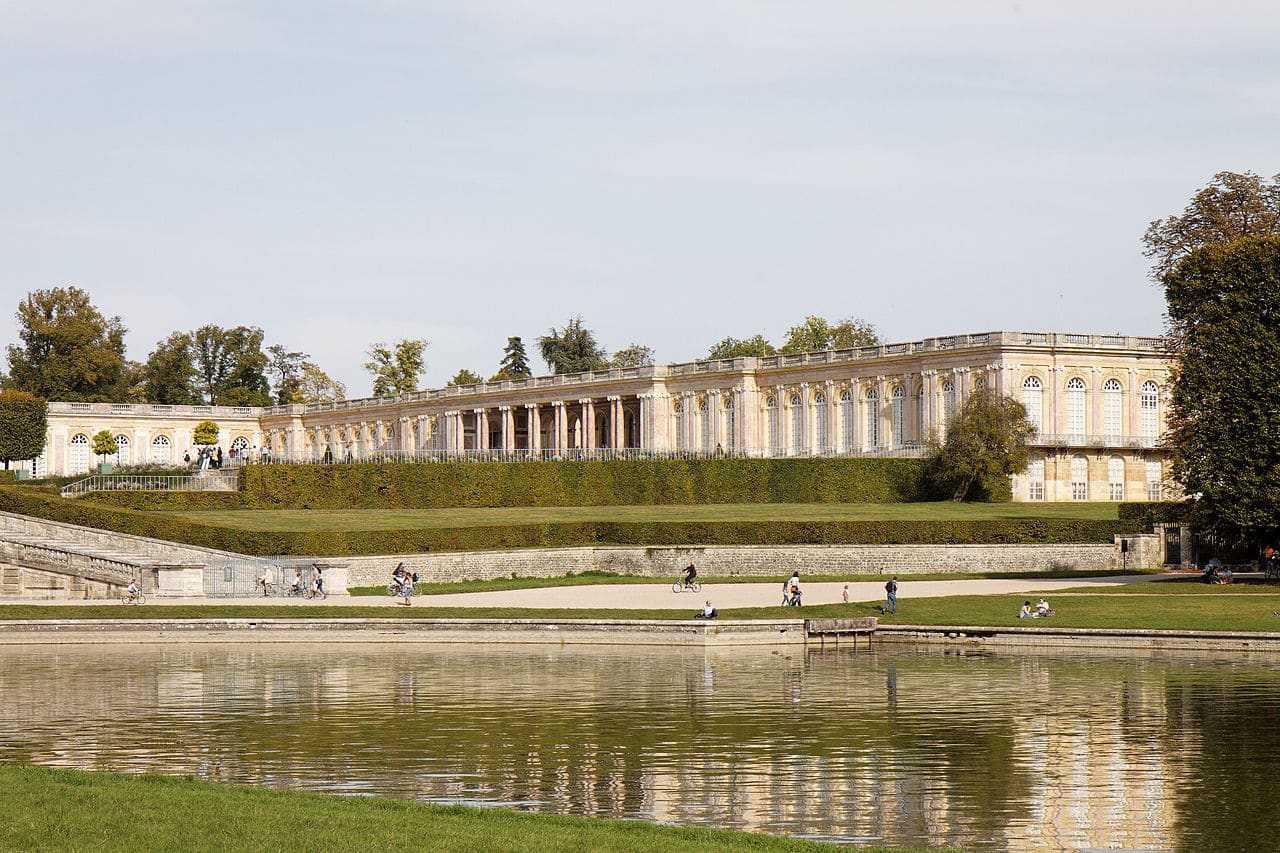
Image - Wikimedia / Thesupermat
The Great Trianon, or marble Trianon as it is also known, was ordered to be built in 1687 under Louis XIV. It is composed of a courtyard, a palace, gardens and ponds. On August 20, 1913 it was declared a Historical Monument of France.
What do you think of the Gardens of Versailles? Have you ever been?
The design, the water fountains, are really wonderful. the variety of nature. Everything leads you to contemplate the magnificence of beauty. The music that accompanies you during the journey from the palace to the queen's village.
The designers knew and have known how to put each plant, each tree in the right place so that everything is perfection. Someday I will go back there.
Hello Teresa.
There is no doubt about it. They are very special gardens, in every way.
A greeting.